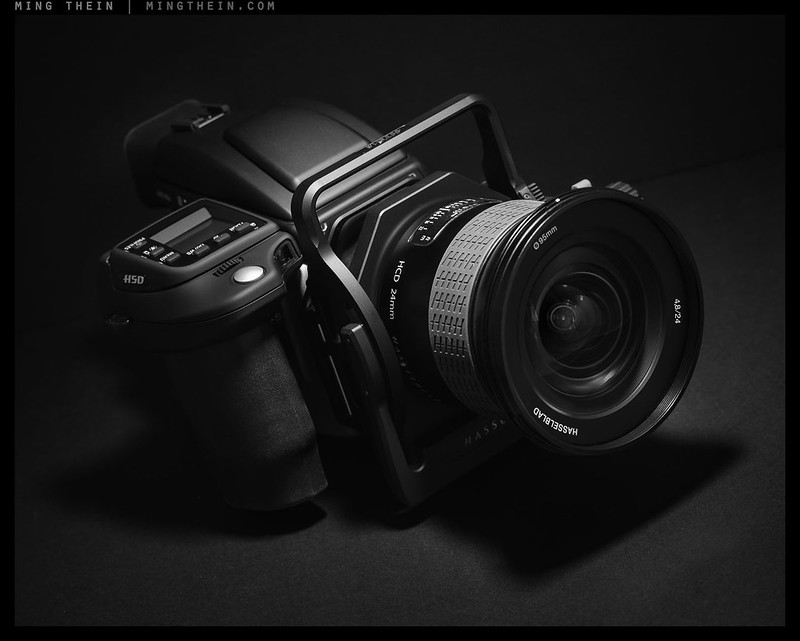
Advance warning: this post contains nothing but gear p***, since it is an equipment-centric post after all…and I make no apologies whatsoever for that. And that thing isn’t a carrying handle, it’s the HTS.
I suppose many of you will have seen this coming: I have switched primary camera systems from Nikon to Hasselblad. And you’ll also probably know I’ve got extremely good reasons for doing so, even more so since this is a significant commitment by any standards. I’ve also had several conversations with various people in the organisation that have convinced me that their future is also going to be pretty exciting indeed. Judging by the number of people who commented and emailed me after the previous recent posts on medium format (here, here) – there’s quite a lot of curiosity and more medium format shooters here than I previously thought. Today’s post is an explanation of that rationale, and the comments will be an attempt to answer any questions from the curious.
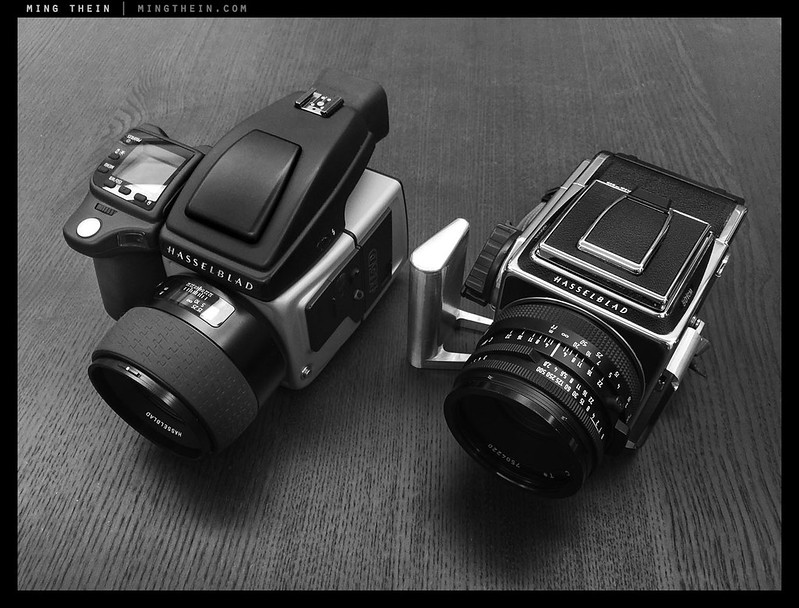
The generation gap
For the 13 or so years I’ve been shooting seriously, I’ve always maintained one system as the go-to when you Need To Get Something Done – ostensibly, the Nikons. First a D70, then a D2H, D200 (x2), D3, D700 (x2), D800E (x2) and now D810 and various secondary bodies* – there’s always been at least one general purpose Nikon in the fleet. Up to five at one point, if I recall correctly. This has been the case, because even though specific tools may address one very narrow range of tasks better – there are frequently situations in which you simply do not know to such a degree of specificity what you might be expected to shoot. In such situations, a Swiss Army Knife is the only way to go.
*D50, D80, D90, D3100, D5100, D5500, F6, F2T. Probably more, but those are the ones I remember.
When you further take into account the necessity of being intuitively familiar with the way your camera responds to avoid missing images in critical situations, reliability, support, easy replaceability, accessories, special purpose lenses, flash, etc. – you really only have Nikon or Canon as choices in the smaller formats. None of the other small format brands have meaningful perspective control solutions, and these are necessary for my architectural and product work.
I believe that either choice is equally valid and the ‘best’ tool will come down to your individual preferences for ergonomics and perhaps specific but frequently used lenses. There are other tradeoffs, of course – but over the long run, these average out. Canon’s early superiority for noise control was lost to Nikon from the D3 generation, and Nikon lost the resolution lead last year. No doubt it will swing again in the next cycle – I do not see these as good reasons to switch systems, because they are incremental and cyclical differences. Yes, I did run a 5DSR for a while – that was because I wanted access to specific lenses that could not be mounted on a Nikon. In the long run, it was impractical to carry 1.5 systems and lenses, plus the dynamic range of that sensor and rendition were different enough to give me headaches in postprocessing.
Long time readers will know I also trialled Pentax 645Z and Sony A7RII-based systems. The 645Z ticked most of the boxes, but the lens system turned out to be simply too limiting. I would still have to carry the Nikons for work requiring perspective control. On top of that, whilst the cameras themselves have been extremely reliable both in my own experience and that of others, the limited support in my country (as far as I know, there are fewer than a dozen cameras here in total) is also problematic should something go wrong.
I think my relationship with the A7RII is sufficiently well documented to avoid having to go into detail. Suffice to say Stockholm syndrome did not set in, and whilst there are tilt shift solutions available via adaptors (Canon, because of electronic control of the diaphragm) a complete system would require the use of quite a lot of adapted lenses – with all of the attendant problems of planarity, skew and decentering which accompany the use of any adaptor. I have a whole shoebox full of adaptors that work well with some lenses but not others, and keeping this straight just turned into a nightmare. Still, there were enough interesting lenses that I was willing to try – the Zeiss Loxias, Batises and older Contax-Yashica Zeisses (2.8/35 PC Distagon, 2.8/85 Sonnar, 100-300 Vario-Sonnar specifically, and also applicable to the Canon). Whilst the setup works well on a tripod, the other limitations were too unpredictable under fast moving situations – and we’re back to carrying extra Nikons again.
But I keep coming back to medium format because it seems as though something in the way it makes me work – or the hardware itself, though the former is more likely – results in a much higher hit rate, more satisfying images and to a somewhat lesser degree, happier clients. Even if most of this is intangible, the difference is there. And once you see it, you can’t un-see it.
I have now owned two medium format digital systems – Hasselblad V (CFV-39 and CFV-50C) and Pentax. I’ve also briefly used the Leica S, Phase One IQ250, and of course the Hasselblad H – in H4 and H5 incarnations. My experience with all of these systems has told me that most have significant compromises, and those are all different – pick whichever one is least of a problem for you. However, a lot of these have gone away with the transition to CMOS – and some other parameters like dynamic range have been improved even further. There was certainly a point where the D800 and co basically invalidated any argument for low end CCD-based (22, 31, 40MP) medium format – it beat them in price, image quality, and left them far behind in versatility and shooting envelope. and not only that, did things those cameras simply could not, like high frame rates, high ISO and focus tracking. However, now that the underlying sensor technology has been equalised, two things have happened: volume has driven price down quite a bit (A H5D-50C is about 40% its original launch price – $14.5k vs $25k or thereabouts) and the shooting envelope has opened up again. In the same generation of technology, bigger is always going to be better.
My underlying reason for trying any new hardware is always because I have reasonable reason to believe that it will do something my existing kit cannot: that may be resolving power, low light performance, rendition, color accuracy, speed, responsiveness, perspective control, etc. The hardware is always nothing more than a tool which must be subservient to my desire to make a certain idea into visual output. The one exception to this is when I shoot for myself – personal projects or art. Then, the camera must feel right. I have no way to quantify this, other than you will know it when you pick it up – and it varies from person to person. That was, and remains the reason I shoot with the Hasselblad V cameras – despite massive limitations like 1/500s top speed, no wide solutions on digital, and 100% manual operation – plus the newest lenses being old enough to vote. But I’ve always enjoyed the experience, and the simplicity and immediacy that comes from only really having three controls – focus, aperture and shutter – in one place. Not to mention that enormous viewfinder. (The best way to use the digital back is like an endless film back where you can change the sensitivity.)
It was for this reason I purchased a CFV-50C late last year after the price reduction – it had just crossed over the threshold into affordability. The recent garage sale was to cover the cost of acquisition; it is still by no means cheap, but not a decision I regret. The color and tonal output from the CFV-50C was far better than anything I’d used up to this point. It isn’t just the outright color accuracy, but the sensor’s ability to distinguish between very similar hues – the latter is critical in reproduction work and I find tends to be of greater concern for clients. Unusually, almost no calibration was required to achieve extremely high transparency, and the sensor’s response appeared to be similar to that of the D810 (highlight biased, long shoulder) – but with even more dynamic range. The difference between the 645Z (which uses the same sensor) and the Hasselblad versions is much like the difference between the D810 and D800E – less linear, more natural, and qualitatively better in every way. Once you experience the other one, you have a really hard time going back.
Given the limitations of the V system – this is obviously not what I am switching to. I was lent a H5D-50C while my CFV was being repaired**, and used it on several assignments. Firstly, the camera didn’t get in the way; secondly, it did things I could not do with the other hardware at my disposal: mainly to do with color accuracy and tonality/dynamic range, which are things clients can definitely see. Of course this is not really surprising given the H5D-50C and CFV-50C share the same sensor and image processor – it was just nice to be able to do it at 22mm-e and with the option for autofocus or shift.
My clients were very happy with the look, too: ‘natural’ was the term that was constantly used. Feeling overconfident, I used it to cover the Thaipusam festival this year, too – the Q that rode shotgun as backup didn’t get used at all, nor did I feel like I missed any shots by not using it. There’s also a unique (to my knowledge) spot metering mode that allows you to select a zone (as in the zone exposure system) and use the spot to define which portion of the image falls in that brightness range. It’s the closest thing we’ve got to ETTR in a camera with an optical finder – just set it to 9 or 9.5. Overall, the results really made me feel as though this might be The One. Thinking it might be my imagination – I shot again with the D810 and Otuses recently to question my objectivity, which only confirmed that the Otuses are still the best glass out there – but the D810 isn’t matching the H5’s (or CFV’s) sensor.
**This is what I mean by professional service: if your camera has a problem, you really get another one until it is fixed. Despite the promises of NPS, I’ve never consistently had this level of service (usually, the cameras seem to be loaned out to the media and you are left hanging or self-insuring) from any other brand, and it really matters when your job and reputation are on the line – not to mention on a camera of this cost.
I began to seriously a) run economics and ROI calculations and b) evaluate the whole system for completeness to the edges of the envelope to see if a switch was feasible. I would not have considered it if the H5D-50C price hadn’t recently been cut significantly; if the MF players want to stay in the game for the long run, drastic action like this might be needed – the number of pros and studios here who’ve gone to FF instead of upgrading their MF systems is legion, at least in my part of the world. But there are also others who are relatively new to the game like myself, who are going the other way. In my experience, Hasselblad’s two strengths over the other MF solutions are the aforementioned color accuracy – which hugely minimises time wasted in PS for critical product work – and a little gadget called the HTS. The HTS goes between body and lens, adds a 1.5x crop factor to expand the lens’ image circle, but gives almost every lens tilt and shift capability. Lenses were designed with this in mind, which means the optics play nice together. In practice, instead of carrying both fast or AF 24/45/85mm lenses and the PCE set (which I frequently do on assignment) – I can now carry one set of lenses and the HTS. There is actually an appreciable weight saving, too.
After a huge amount of thinking, scouring of historical shoot packing lists, EXIF data and final client deliverables – purchasing mistakes are going to be highly costly – I came to the conclusion I could get away with four lenses: the 24mm, 28mm, 50mm, and 100mm; HTS, 1.7x TC and V-H adaptor. I cover roughly (in 35mm-e terms) – 19, 22, 40, 80, 135mm with AF, and 30, 60, 120 and 200mm with movements, and flash sync to 1/800s. The V adaptor adds 50, 80, 120 macro, 150 and 250mm lenses – again with flash sync to 1/500s. I can even pack the V body as a spare. (There are also various unhealthy combinations involving all three adaptors, but let’s not go there.) If you’re wondering why 24 and 28 – the 24 will pretty much live on the HTS for architectural and interior work, and after combined crop factors is a ~27mm. The 28 is 33mm, which isn’t wide enough most of the time. The 28 is a more friendly focal length for handheld work, and also 2/3 stop faster.
At this point, I also have an announcement to make. For the first time, I have formally tied up with a brand: I have been appointed a global Hasselblad Ambassador for 2016 (official announcement here), for which I have to thank the team at Hasselblad (specifically, William Penrice and Anders Espersen) and Shriro in Hong Kong and Malaysia for their support and for making all of this possible.
I’m excited because I think a) image quality really takes a step up, and b) my clients appreciate the difference. I enjoyed shooting with the CFV-50C, and wanted that image quality all the time – with an even wider envelope. (I still of course enjoy shooting with the CFV, but that’s now my ‘weekend camera’.) The H5D-50C gives me that, and saves my back somewhat. For the curious – one Nikon and the more specialised lenses (Otuses, 20/1.4. 180 APO) will stay for the time being during the transition. I am not suggesting even for a moment that the H system (or even medium format for that matter) is a perfect solution for everybody – far from it, given the frightening cost, limited AF and frame rates and overall size – but I do believe I’ve found a better fit for the way I shoot and my own professional and personal needs. MT
Coda: Contrary to popular opinion, I don’t think medium format is dying because of improvements in 35 FF – far from it. If anything, it’s the opposite: as awareness of precisely what improvements can be had at the top end increases, the demands are getting greater, at least on the client side. And it’s important to remember that for a company like Sony that manufactures sensors at all sizes, architecture developed for smaller sensors can easily applied to larger ones – if anything, there are some great economies of scale to be had here since a new sensor does not have to be developed from scratch. Ergo, what we gain from 35 FF and smaller applies to MF, too. Remember, BSI CMOS technology was really driven by camera phone imagers before it becomes mainstream in larger formats…
The equipment mentioned in this post is available here from B&H in the US, or Shriro in Asia. More information is available at www.hasselblad.com
Hasselblad H5D-50C (with wifi)
Hasselblad HCD 4.8/24
Hasselblad HCD 4/28
Hasselblad HC 3.5/50 II
Hasseblad HC 2.2/100
Hasselblad 1.7 TC
Hasselblad HTS 1.5
Hasselblad CFV-50C
__________________
Visit the Teaching Store to up your photographic game – including workshop and Photoshop Workflow videos and the customized Email School of Photography. You can also support the site by purchasing from B&H and Amazon – thanks!
We are also on Facebook and there is a curated reader Flickr pool.
Images and content copyright Ming Thein | mingthein.com 2012 onwards. All rights reserved

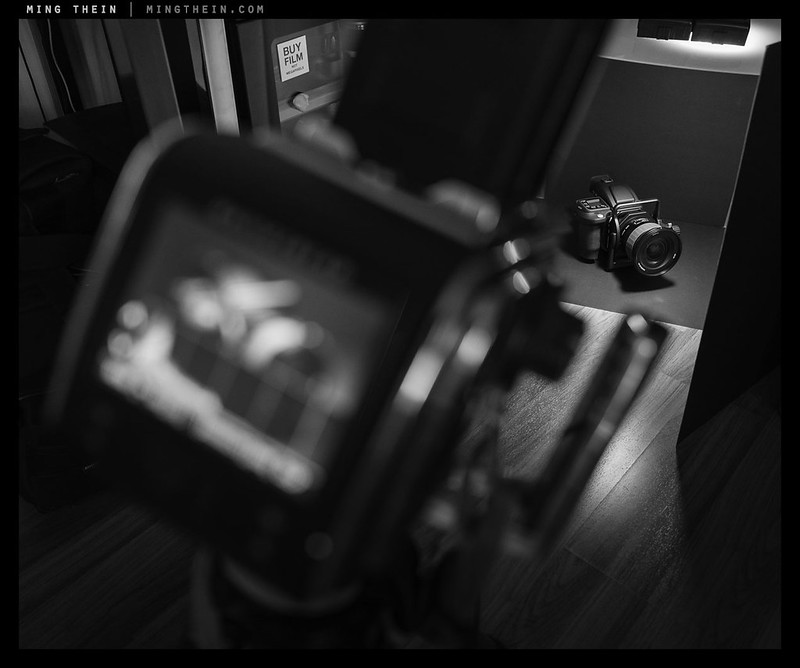
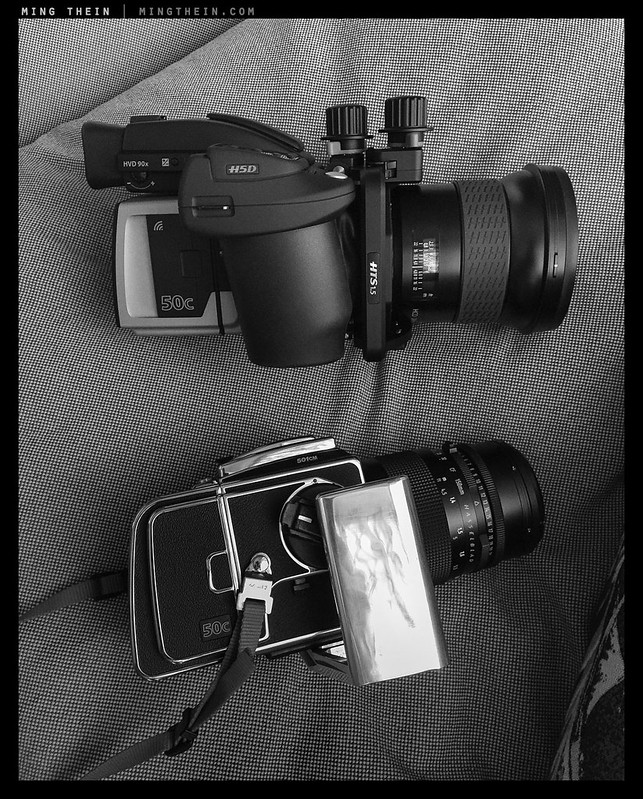
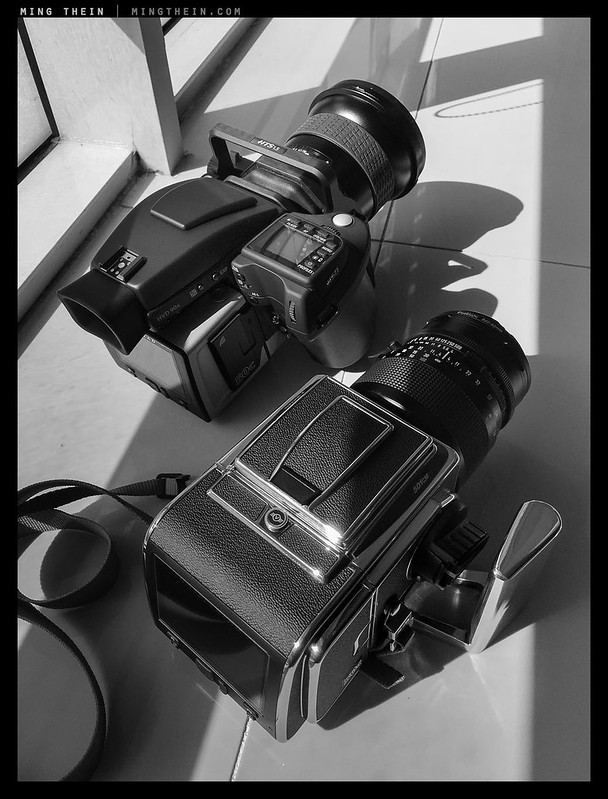
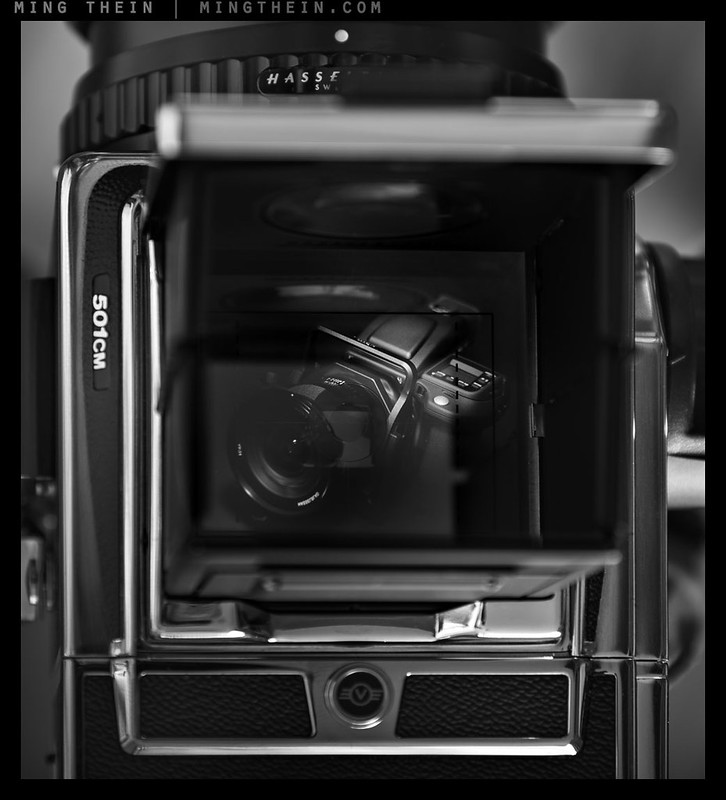





Hi Ming. Did you get to try the HC 80mm – the standard kit lens – with the H5D-50C? How were those images, in terms of tonality, sharpness etc? Any specific reasons to choose the 100mm, besides the ability to open up to 2.2?
The only 80 I’ve used was a very beaten up old demo at the local distributor – it had a very loose front barrel and had obviously lead a hard life, so I’d be hesitant to judge based on that sample. The 100 at 2.8 will be better than the 80 at 2.8 since it’s already stopped down a little, and you of course have that extra 2/3 stop emergency speed…
the ixd hasselblad video have not gone 4k yet. why? since camera manufacturers are going medium format for videographers and photographers; hasselblad either need to increase 50 mega pixels to 100 for the V series or upgrade the idx video. How much more would it help to stay ahead of the competition as fuji, and lecia introduce their medium format cameras?
Because the base Sony 50MP sensor isn’t 4K compatible – no camera using this sensor has 4K capability.
what is the different between the hassellblad 4116 edition and the hassellblad ixd? this is kind of confusing.
I assume you mean the X1D – as far as I know, just color.
Just a quick line to say thanks for this write up and for the Mid Term review, I found them very useful while researching my own jump from 35mm to MF – kudos!
No problem.
Dear Ming,
First of all, sorry for the off topic.
I would like to know why do you cover the logo of your cameras? Will You do the same with H5D?
Second,
Have you ever tried 200 2.0, 400 2.8 and similar lenses? I am sure that they are better than old Voigtlanders, Contax and others. I would say that 200 2.0 are the best available lens for Nikon. Razor sharp, distortion free, lighting auto focus, top-notch build quality…
In terms of medium format: I shall wait to see what Fuji and Sony will eventually bring. Unlike You, I am more than satisfied with A7R II and X-T1. They bring me the joy of photography after years of using DSLR cameras… Fuji is great for street, and the new GM 85 with Alpha 7R II wipe the floor with all 35mm cameras in my opinion. Much better than Batis, but it is also more expensive. I have got some beautiful portraits with it, and eye AF works great. In the future I might change Fuji to Oly, I am not sure for now. I was interested in Leica SL, but I literally laughed when I saw Dpreview studio samples. Image Quality is totally poor, even old A7, D7200 and A6300 outperformed it. The most overpriced camera ever.
I prefer film medium format. All that MF Fuji’s are pleasure to use. 6×9 with Velvia and I am in heaven. 🙂 For more 3 dimensionality I prefer Toyo-View 4×5. Drum scans are out of this world. in the future I would like to buy Linhof or Horseman 8×10 and that will be the pinnacle of my enthusiastic photo career…
Regards
1. I’ve explained this before. It’s because I don’t want to retouch out NIKON from every reflective macro object (i.e. watch) I photograph. I don’t use the Hasselblad for that, so no.
2. I’ve used the superteles and have no need for them for any of my work.
Thanks!
I wish You all the best in the future work
Had the A7RII at the same time that I bought the SL. Even with the Otus lens, my non photographer wife aways chose the SL – with M glass – photos over the Sony shots in a blind test. Not only did I draw the same conclusion, the desire to take the Lieca everywhere was much stronger. It just a fine, well thought out design. And EVF requires constant reminder that you’re not looking through an OVF. My fundamental creativity is much higher with the SL
Sure, you’re right about it, I guess it comes to what kind of work you do.. Aside from it, did you notice “wider color tonality” with your new system?
Yes, much better hue accuracy, too.
Hi Ming,
You said:
” There’s also a unique (to my knowledge) spot metering mode that allows you to select a zone (as in the zone exposure system) and use the spot to define which portion of the image falls in that brightness range. It’s the closest thing we’ve got to ETTR in a camera with an optical finder – just set it to 9 or 9.5.”
Actually, the Canon 1DX also has an ETTR feature, although not neatly tied to the spot meter ( but it can be, after the fact by using the C1, C2, C3 Custom User Preferred Saved Settings feature). The ETTR feature to which I refer basically allows you to dial in a bias to the exposure meter. So if you’d like the meter to be 2/3 of a stop “hotter” then you dial that in; the meter will read as normal (if my memory serves me correctly) but the actual exposure will be 2/3 “hotter”, that is, exposed to the right.
I think gradually a lot more cam companies are getting the ETTR issue; even Phase One have a Zone System on their new XF System.
Interestingly, Hassy do have some history/pedigree with in-camera Zone System application. They had a Zone System feature on their old V System 200 TCC and 200 FCC cameras.
You can do the exposure offset too with the Nikons, but the H implementation is much easier/ faster – you can also change it quickly on the fly.
Hi,
I am curious, how is the Hassy ETTR feature implemented; what makes it a better experience?
You can just twirl the rear control dial to change zones (and effectively add/remove exposure compensation, which then isn’t double counted). It’s automatically enabled with the spot meter. Not so many steps to set…
Hi Ming, just curious what’s your take on macro lenses(v and hc ) if any, thank you!
I’ve only used the 4/120 CF – it’s much better close up than at distance, and takes extension tubes well. THe HC 120/4 II is supposed to be excellent, but not recommended with the HTS because of weight – it has not been a priority because it makes more sense to continue to do watch work with the Nikons anyway because of magnification.
Thanks, I also have 120/4 cf with ext tube on 503cw but did not try it with db, also I have h3d mk2 31 but did not get the macro lens for it yet, I did try the 150hc with ext tube and it worked well, but was a bit longer to focus on fine details, also a bit of ca in highlights at 5.6- 8, anyhow almost never shoot that open, hts is convenient but for that amount of money I would rather add a technical camera, I also predominantly using Nikon and pc lens in my line of work, actually it was your and of help when I was choosing between Schneider and Nikon , thank you!
I considered that too, but technical cameras don’t have the same wide solutions as the HTS – plus you’ll have to buy several lenses instead of reusing your existing ones.
Hi Ming, I’m thinking about going to the V path (203FE or 501CM) after reading many of your great 50C posts. What lens will you recommend (50/4 CEF and others)? Will the 40/4 IF be much better than the 40/4 CFE? Also, the silver V grip you are using above looks very good, where can I get it? Does it provide the clearance after putting on the large 50C battery. Thanks.
40 IF if you can find it, 50 FLE, 150 CF and 250 Superachromat. The rest are good but those four are exceptional. You probably also want a 90deg prism. My grip is custom made, and yes, it clears the battery.
Thank you! Please let me know where I can get the grip and app cost.
Sorry, I should have been clearer: the grip isn’t for sale. I designed it and had it machined for me, then spent the better part of a day polishing it. It just doesn’t make economic sense for me to make them – material and machining alone was around $500, excluding time spent polishing…
Thanks again! I can imagine the time/effort you guys put into it and it’s well worth it. Please let me know if it will be open for sale in the future. The grip is really a great match with the V.
The two sharpest lenses in the V series group have been acknowledged to be the 100 mm Planar and the 180mm Sonnar and I agree with that estimate from my experience. I agree that the 50mm FLE Distagon is a super lens. The Hasselblad Winder CW works fine with the V series bodies, the 90 mm finder and the digital back 50c. One problem with the Hassey V bodies is focusing with the acute-matte viewing screen, especially in dim light (ask any old wedding photographer). The old standard pre-acute-matte actually works better in dim light. It is really critical to have accurate focusing with that 50 mega-pixel 50c back! Jerry
I’d add the 250 Superachromat to that group. You’ll also need to get the back/camera perfectly aligned, too. It may be in focus on the focusing screen, but if it is a different distance from flange-screen and flange-back, there isn’t much point either 🙂
Thank you both. Which 90 finder would you recommend? I heard Hass PM90 has clearance issue with CFV backs.
Also, can the back/camera be self adjusted or aligned?
The PM90 *will* clear the CFV-50C but not the -39 and -50. I prefer the HC1 or HC4.
Thanks for reply.
Nice choice I converted to medium format a year ago and love it. I use the mamiya leaf credo 50. But I also kept my d4s and d810 since there are many situations that medium format isn’t perfect for. Although the recent upgrade in firmware for phase and mamiya gave me a nice boost in autofocus. Not sure if you use capture one pro also but the new skin tones are also very nicely improved. Enjoy the hasselblad it’s a beauty. I’m still not a Q fan though, wish they opted for a 35-45 lens instead. I photograph people or family mostly with my smaller camera and it’s a bit too wide for me. Plus I do like changing lenses occasionally, so I tried the SL and it’s only lenses made it a big combo. I wish Leica would come out with an interchangable Q or make the Q in different focal length options, I’d buy a 35mm and 75 mm version. For now I opted for the Fuji xpro 2.
Thanks. Credo 50 has the same sensor as the 645Z, H5D-50C/ CFV-50C and IQ250/350, I think. I don’t use C1 (or Phocus for that matter) because I prefer the consistency of workflow for different cameras offered by ACR – like you, there are some things MF isn’t quite suitable for yet.
The Hasselblad H is brilliant, I have been using one for years with the older Phase One P65+. It is a brilliant design that I can use hand held in the with few issues (just the sort of work I do) because it has been designed exceptionally well. The only thing that prevents me from using the blad back rather than the phase one is the software, the phocus set up I found slow and frustrating. That was years ago though and I would certainly try it again with the 50c. Best of luck with the move, look forward to reading more about it in the future.
I use it with ACR/PS. No Phocus other than for wireless tethering/remote 🙂
Ming, how is the Hasselblad behaving regarding shutter vibration? As a user of the Pentax 645Z I must use a shutter speed of 1/250s or shorter with the 120 mm (on a sturdy tripod with mirror up and 12s self timer) otherwise i will get fuzzy images or worse, random unsharp patches in the image.
The actual shutter has very little vibration because it’s a leaf shutter. Mirror is noisy but quite well damped; 1/2x is fine handheld or 1/1.5x with some care. You can also introduce an additional delay between mirror going up and shutter firing, though I find it really throws off my timing so I don’t use it. On a tripod, mirror up plus 2s is fine.
I’d appreciate your thoughts about using a MF (Hassy or 645Z) for wildlife, hand held and operation at sub zero temperatures.
Do the H5D cameras have removable backs like the 500 ser. cameras to allow easy access to sensor cleaning?
Thanks and congrats for your position with Hassy.
Not ideal because you probably won’t have enough reach and certainly won’t have AF tracking ability compared to the 35mm options. The longer lenses for 35mm are also faster, so you may well not gain any image quality either if you have to push the ISO up. The H series cameras have removable backs.
I asked your advice last Nov. about buying the CFV-50c for my V system (have lots of lenses and flex body), and you did not recommend it! Now you have one for your system – glad I did not heed your advice! Actually the CFV-50c fits my type of shooting and that is why I bought one. A further comment and a question: The digital back is perfect for use with the Flexbody as there is more lens coverage than with film – in fact, the Flexbody was designed for use with digital backs with their smaller area of coverage thereby greatly increasing lens coverages for all the Hassey lenses. Question: I am used to working with DNG files using camera raw and Photoshop but am having some difficulty using the Phocus software. Do you use Phocus or download using it to convert immediately to DNG files? Thanks for all your work – very useful.
I didn’t recommend it at the price they wanted at the time. 50% off makes quite a bit of difference… 😉
Flex body: you can’t rotate the axes, so movements are along one axis of the frame only.
I’m working the 3FR files in ACR.